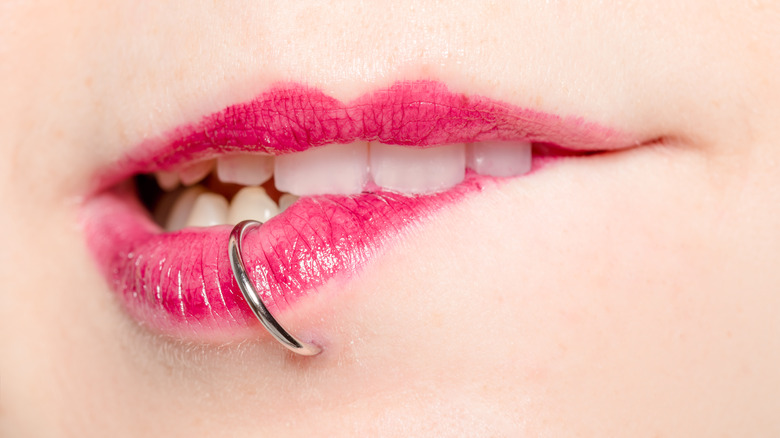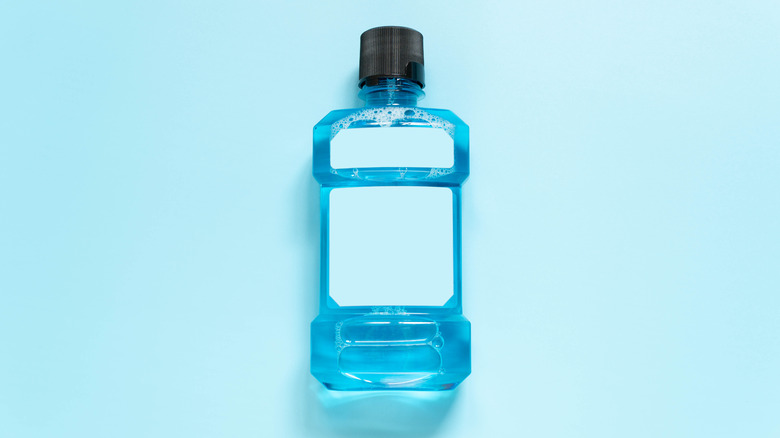The Truth About Labret Piercings
Labret piercings are often confused for lip or chin piercings, however, they actually sit just below the lip and just above the chin. According to Canadian piercing studio, Pierced, labret piercings are commonly placed in the center of the face, however, they can also be found on a side depending on personal preference.
When considering a labret piercing, it's a good idea to know about the amount of pain it can cause. While it is minimal in comparison to other piercings, such as those that go through hard cartilage — like a rook, tragus, or conch piercing — everyone has their own pain threshold, and you might find it more uncomfortable than other people do.
Unlike many other piercings, labret piercings can actually cause more pain after the puncture has been done, with swelling and throbbing in the days that follow. While this is completely normal, it's important to prioritize aftercare in order to avoid any further aggravation.
Labret piercings can take up to two months to heal
The Crystal Ball Clinic, a tattoo and piercing studio located in New Zealand, notes that a labret piercing can take anywhere from six to eight weeks to heal. In the meantime, they advise adopting a cleaning routine twice a day. It's crucial that you clean the inside of the piercing with mouthwash and the outside with a gentle saline solution, but make sure you follow the aftercare instructions provided by your piercer. Pierced adds that after cleaning, you should always dab the puncture dry with a paper towel.
Like all facial and oral piercings, it's a good idea to cut back on smoking, alcohol, and anything else that can irritate it, as well as eat soft food during the healing process — or at the very least chew slowly. And whatever you do, do not touch or play with the jewelry unnecessarily, especially if you have dirty hands, as this could lead to infection. If you do notice any abnormalities or see any signs of infection, be sure to consult with your doctor who will be able to check it out, and if any piercing-related questions crop up, contact your piercer.

